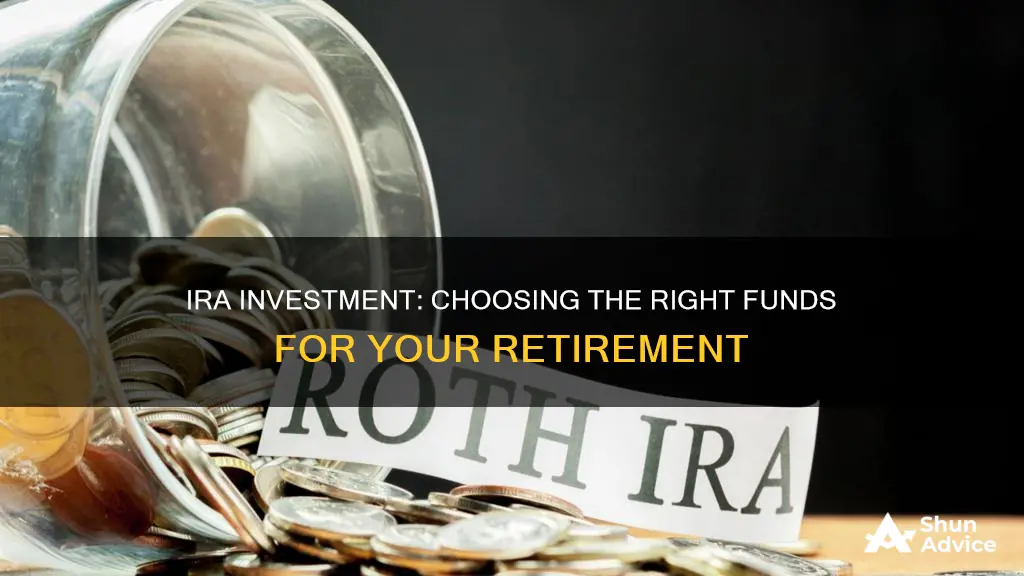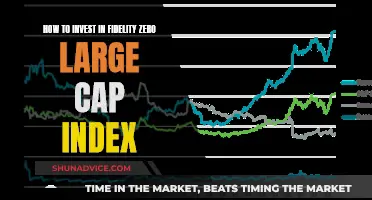
When it comes to investing in an IRA, there are a variety of options to choose from, each with its own advantages and considerations. One of the most important factors to consider is the level of risk you are comfortable with. This includes taking into account your time horizon, or how long you plan to invest, and your ability to tolerate fluctuations in the market.
Another key consideration is the tax implications of your investments. IRAs, whether traditional or Roth, offer tax advantages that can impact your investment choices. While traditional IRAs provide tax deductions on contributions, Roth IRAs allow tax-free growth and withdrawals under certain conditions.
With these factors in mind, here are some of the best investment options for an IRA:
- Index funds and ETFs: These provide diversification by allowing you to invest in a basket of securities rather than individual stocks. You can choose from various types, such as S&P 500, total stock market, or international stock index funds.
- Stock funds: Dividend stock funds, value stock funds, and Nasdaq-100 index funds offer relatively lower volatility and attractive returns.
- Bond funds: These funds provide stable and secure sources of income but tend to generate lower returns. U.S. bond index funds or core bond funds with highly-rated bonds can be good options.
- Target-date funds: These funds automatically adjust your asset allocation over time, reducing the need for active management as you approach your target retirement date.
- Small-cap stock funds: Investing in small-cap companies offers the potential for high growth over time, but it comes with higher risk due to their smaller size and financial resources.
- Mutual funds: Actively managed mutual funds tend to have higher expenses but can provide strong returns if managed effectively.
- Real estate investment trusts (REITs): REITs are tax-advantaged companies that manage real estate investments and are known for paying out high dividends.
| Characteristics | Values |
|---|---|
| Risk levels | High, moderate, low |
| Investment types | Individual stocks, mutual funds, exchange-traded funds (ETFs), dividend stock funds, value stock funds, small-cap stock funds, bond funds, real estate investment trusts (REITs), target-date funds, Nasdaq-100 index funds, S&P 500 index funds, high-yield bond funds, international stock funds, etc. |
| Investment strategies | Asset allocation, risk tolerance, diversification, tax-efficiency, growth potential, dividend payouts, turnover rates, trading activity, timeline |
| Tax considerations | Tax-free growth, tax-deferred, tax-advantaged, taxable events, capital gains taxes, short-term vs. long-term gains, tax-efficiency, tax burden |
| Investor profile | Age, retirement plans, risk tolerance, investment goals, income level |
What You'll Learn

Understanding asset allocation
There is no one-size-fits-all formula for the right asset allocation—it depends on factors like your age, financial goals, and risk tolerance. However, most financial professionals agree that asset allocation is one of the most important decisions an investor can make.
When allocating assets in an IRA, investors should consider their time horizon (how long the money will be invested) and their tolerance for risk. Generally, younger investors are advised to invest more heavily in stocks, as they have a longer time horizon and can ride out the market's short-term fluctuations. As investors get closer to retirement, they may want to adjust their allocation to reduce risk. This is sometimes referred to as a "glide path", where the asset allocation becomes more conservative over time.
One rule of thumb for determining asset allocation is to subtract your age from 100 (or 110 or 120, for a more aggressive allocation). The resulting number is the percentage of your portfolio that should be allocated to stocks. For example, a 30-year-old investor might allocate 70% of their portfolio to stocks and 30% to bonds.
It's important to keep in mind that asset allocation is an ongoing process and may need to be adjusted over time as your financial goals and circumstances change. Additionally, while asset allocation is a critical component of investing, it is not the only factor that determines investment success.
Vanguard Funds: Investing in the Future with FAANG
You may want to see also

Risk tolerance
Understanding Risk Tolerance
Factors Affecting Risk Tolerance
Several factors determine an individual's risk tolerance:
- Goals: Financial planning is about deciding what you want from life and choosing an investment strategy to achieve those goals.
- Timeline: Generally, a longer time horizon allows for a higher risk tolerance. Younger investors saving for retirement can afford to ride out market volatility, whereas someone saving for a house in a few years would have a lower risk tolerance.
- Age and life stage: Age is a significant factor, as older individuals closer to retirement age tend to have a lower risk tolerance.
- Portfolio size: The size of your portfolio can affect your risk tolerance. A larger portfolio may provide more cushion against potential losses.
- Personal comfort level: Some people are naturally more comfortable with taking risks than others. It's important to assess your own comfort level and choose investments that align with your risk tolerance.
Your risk tolerance often determines the types of investments you choose. Here's how risk tolerance may influence your investment choices:
- Aggressive risk tolerance: Investors with a high-risk tolerance are willing to accept higher potential losses in pursuit of better returns. They often invest primarily in stocks, equity funds, and exchange-traded funds (ETFs).
- Moderate risk tolerance: These investors aim to balance opportunities and risks, typically allocating their portfolio between stocks and bonds, such as a 50/50 or 60/40 structure.
- Conservative risk tolerance: Conservative investors seek investments with guaranteed returns and minimal volatility. They often invest in lower-risk options like bank certificates of deposit (CDs), money markets, or U.S. Treasuries.
When choosing funds for your IRA, it's essential to consider your risk tolerance. Here are a few points to keep in mind:
- Asset allocation: Your risk tolerance will guide your asset allocation, determining the proportion of stocks, bonds, and other investments in your portfolio.
- Long-term perspective: IRAs are typically long-term retirement accounts, so it's crucial to invest with a long-term perspective. This may involve accepting higher risk in exchange for potentially higher returns over time.
- Diversification: Diversifying your portfolio across different asset classes, market sectors, and geographic regions can help manage risk while maximizing returns.
- Cost minimization: Fees and other costs can significantly impact your returns over time, so it's important to consider these expenses when choosing funds for your IRA.
In conclusion, understanding your risk tolerance is vital when choosing funds for your IRA. It will help you make informed investment decisions that align with your financial goals and comfort level. Remember to regularly assess your risk tolerance and adjust your investment strategy as needed.
Low-Cost Index Funds: When to Steer Clear
You may want to see also

Mutual funds
There are various types of mutual funds, including equity funds, fixed-income funds, money market funds, and hybrid funds, allowing investors to choose funds that align with their financial goals and risk tolerance.
- Fees and expenses: Mutual funds typically have higher expense ratios, especially when they are actively managed. Over time, these expenses can significantly impact your long-term IRA earning potential, so it's essential to consider the cost when making investment decisions.
- Tax implications: Understand the tax implications of holding mutual funds in a Roth IRA vs. a traditional IRA. For example, there is greater flexibility in withdrawing contributions in a Roth IRA compared to a traditional IRA. Additionally, consider the tax efficiency of the investment vehicle. While mutual funds can generate capital gains within the portfolio, which may result in taxable events, ETFs are often considered more tax-efficient due to their structure.
- Risk and return: Mutual funds offer diversification, which helps spread risk and reduce the impact of poor-performing individual investments. However, it's important to note that mutual funds carry investment risks associated with market volatility, asset class risks, and the specific holdings of the fund. When investing for retirement, consider your risk tolerance and investment horizon. If you are a young saver with a high-risk tolerance, you may opt for equity index funds or growth funds, which aim for market-level growth or higher returns. On the other hand, if you are a busy saver who wants a more hands-off approach, target-date funds offer a single, easy-to-manage fund that diversifies across asset classes and gradually becomes more conservative over time.
- Active vs. passive management: Mutual funds can be actively or passively managed. Actively managed funds have fund managers who actively make investment decisions, while passively managed funds track specific benchmarks. Passively managed funds, such as index funds, generally outperform actively managed funds over the long term due to lower costs.
- Investment horizon: Your investment horizon, or how long you plan to invest, is an important consideration when choosing mutual funds for your IRA. If you are saving for retirement, you typically want to take on more risk when you're younger and gradually reduce risk as you approach retirement age. This "glide path" is an important factor to consider when evaluating target-date funds.
- Fidelity 500 Index Fund: This mutual fund invests in the S&P 500 companies, aiming to mimic the index's performance. With low fees and good performance, it is a good option for those seeking market-level growth.
- Vanguard U.S. Growth Fund Investor: This growth fund invests in companies expected to increase their revenue and earnings faster than their peers or the overall market. It has achieved strong 10-year annualized returns, but keep in mind that growth funds are more susceptible to market downturns.
- T. Rowe Price Balanced: This Gold-rated mutual fund utilizes a team of excellent investors to build a wide-ranging portfolio. It holds about 65% in equities and a decent amount of foreign holdings, making it a good choice for those seeking moderate allocation.
- Vanguard High-Yield Corporate: This Silver-rated mutual fund is mostly managed by Wellington Asset Management and takes on more credit risk than a core bond fund. With a low annual fee of 0.23%, it is a reliable and affordable option.
Index Funds: Choosing the Right Investment Strategy
You may want to see also

Target-date funds
Early in your working life, a target-date fund is generally set for growth by having a much larger slice of your portfolio in stocks rather than fixed-income investments like bonds, which are safer but provide smaller returns. As your retirement year approaches, the fund gradually shifts towards more bonds, money market accounts, and other lower-risk investments.
Your retirement year is the "target date" of most of these funds, and the funds are named accordingly. For example, if you are 40 years old and plan to work until you are 65, you would choose a fund with the year nearest your planned retirement date in its name.
The chief appeal of target-date funds is their simplicity. They put all the ingredients together for you, so you don't have to worry about choosing the right mix of investments. They are also the default plan of choice for many providers of employer-backed retirement plans, such as 401(k) accounts.
Another advantage of target-date funds is that they keep investors from being too reactive to the market's twists and turns, which often results in buying high and selling low.
NHCU's Investment Strategies: Where Are Funds Allocated?
You may want to see also

Robo-advisors
- Wealthfront charges a low annual management fee of 0.25% and offers a \$50 bonus when you fund your first taxable investment account. It provides a range of investment options, including individual stock investing, high-yield cash accounts, and diversified portfolios.
- Betterment has a low annual management fee of 0.25% and offers a 1% match on IRA contributions. It provides multiple portfolio options, including socially responsible and crypto investment portfolios, and access to financial advisors for an additional cost.
- Vanguard Digital Advisor is an affordable option with a low annual net advisory fee of around 0.20%. It offers access to Vanguard's investing expertise and ETFs, but has limited portfolio customization and no access to human advisors.
- SoFi Automated Investing offers free portfolio management and access to certified financial planners. It has a low account minimum of $1 and includes a range of low-cost investment options, but does not offer tax-loss harvesting.
- Fidelity Go is a robo-advisor offered by Fidelity that provides free portfolio management for balances under $25,000. It integrates with other Fidelity accounts and uses Fidelity Flex funds, which have no expense ratios. However, it does not offer tax-loss harvesting.
When choosing a robo-advisor, consider factors such as management fees, expense ratios, account types, investment options, rebalancing, and access to human advisors.
Index Funds: Where to Start and What to Know
You may want to see also
Frequently asked questions
There are a few different types of funds that are good for investing in an IRA. These include:
- Broad-based stock and bond index funds
- U.S. stock index funds
- U.S. bond index funds
- Global stock index funds
- Small-cap stock funds
- Nasdaq-100 index funds
- Target-date funds
Funds that you should avoid for your IRA include:
- Highly speculative investments
- Cash
- Municipal bonds
When choosing funds for your IRA, it is important to consider your risk tolerance, time horizon, and ability to tolerate risk. You should also consider the tax efficiency of the funds, as funds with lower tax efficiency may be better suited for a Roth IRA. Additionally, you may want to choose funds with high income generation and low expense ratios.







